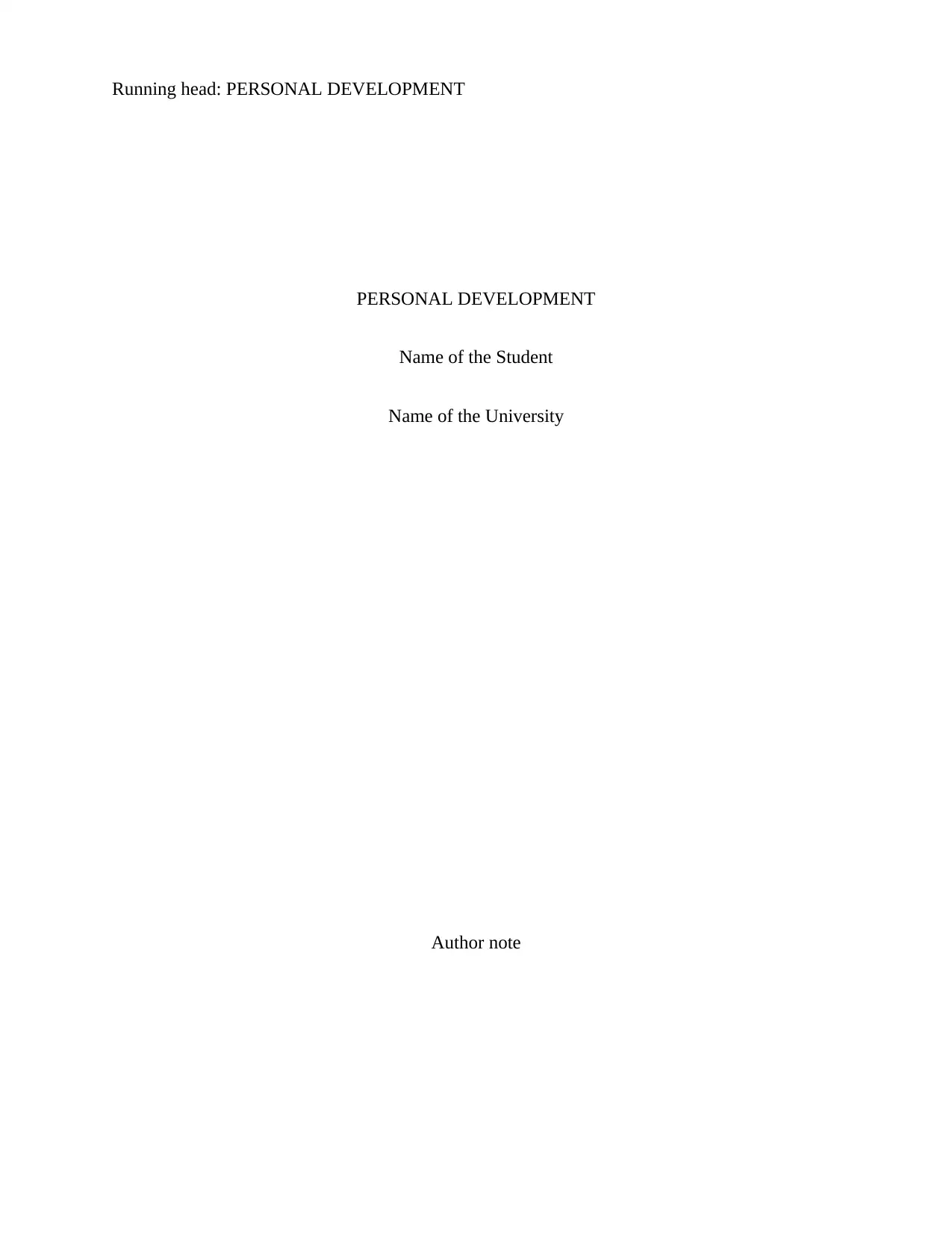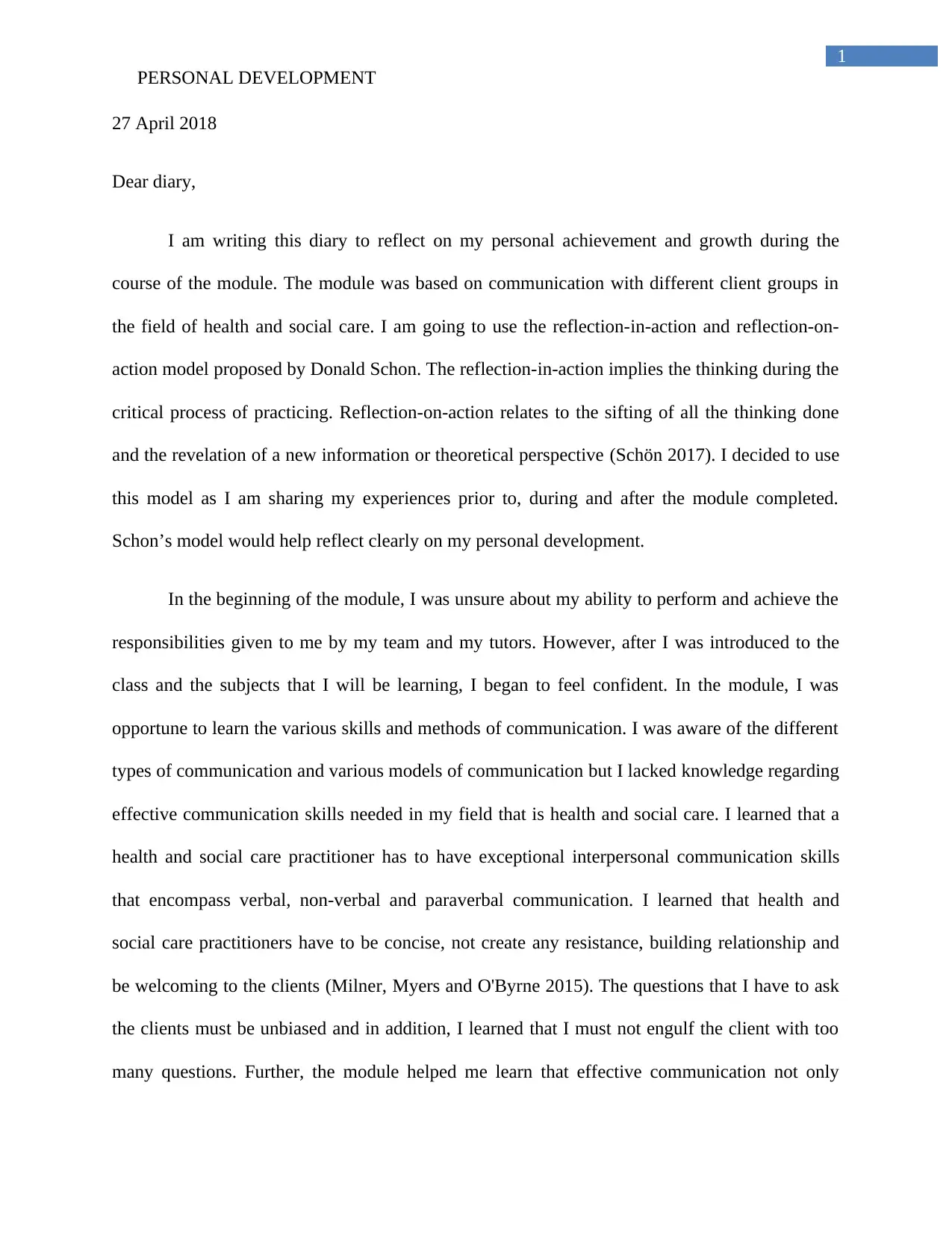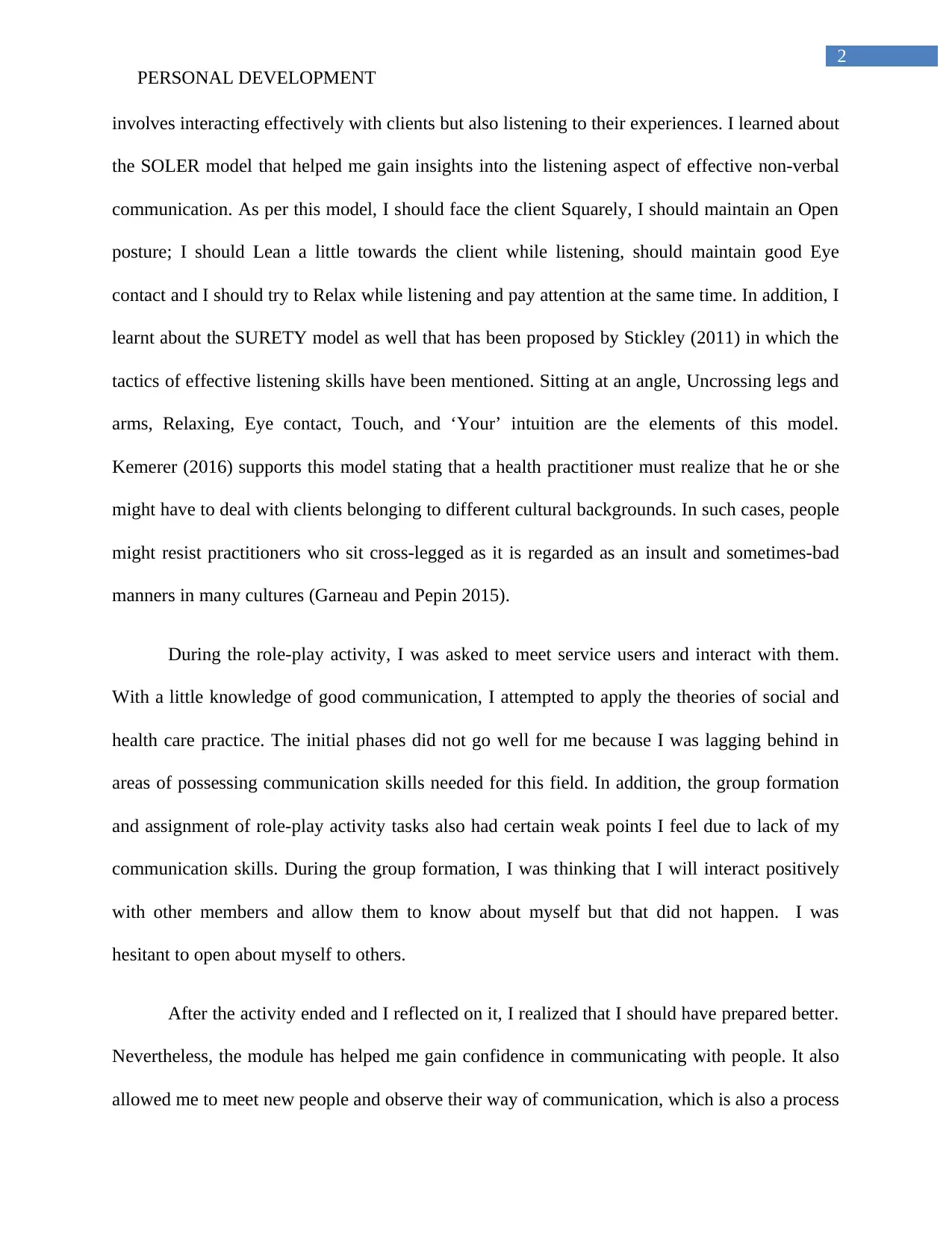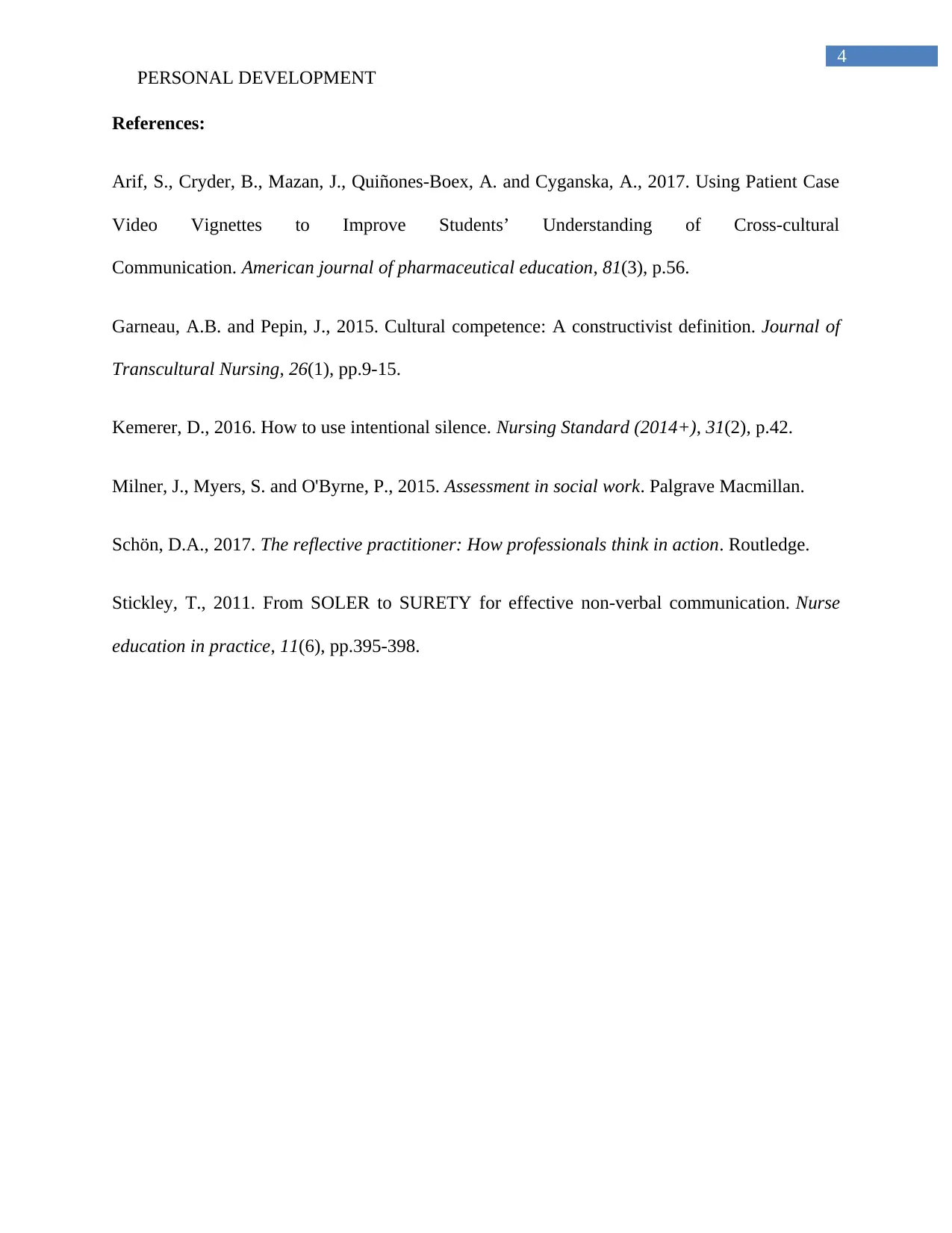University Personal Development Module: Reflective Journal
VerifiedAdded on 2021/06/14
|5
|979
|61
Journal and Reflective Writing
AI Summary
This reflective journal entry details a student's personal development journey within a health and social care module, focusing on communication skills. The student utilizes Donald Schon's reflection-in-action and reflection-on-action model to analyze their experiences before, during, and after the module. Initially lacking confidence in their abilities, the student gained knowledge of effective communication techniques, including verbal, non-verbal, and paraverbal communication, emphasizing the importance of concise and unbiased interactions with clients. The journal highlights the SOLER and SURETY models for effective listening and acknowledges the significance of cultural sensitivity in communication. Through role-play activities, the student faced initial challenges but ultimately gained confidence in their communication abilities, applying learned concepts in everyday practice and recognizing the importance of building rapport with clients. The student references several academic articles on communication in health and social care.
1 out of 5












![[object Object]](/_next/static/media/star-bottom.7253800d.svg)